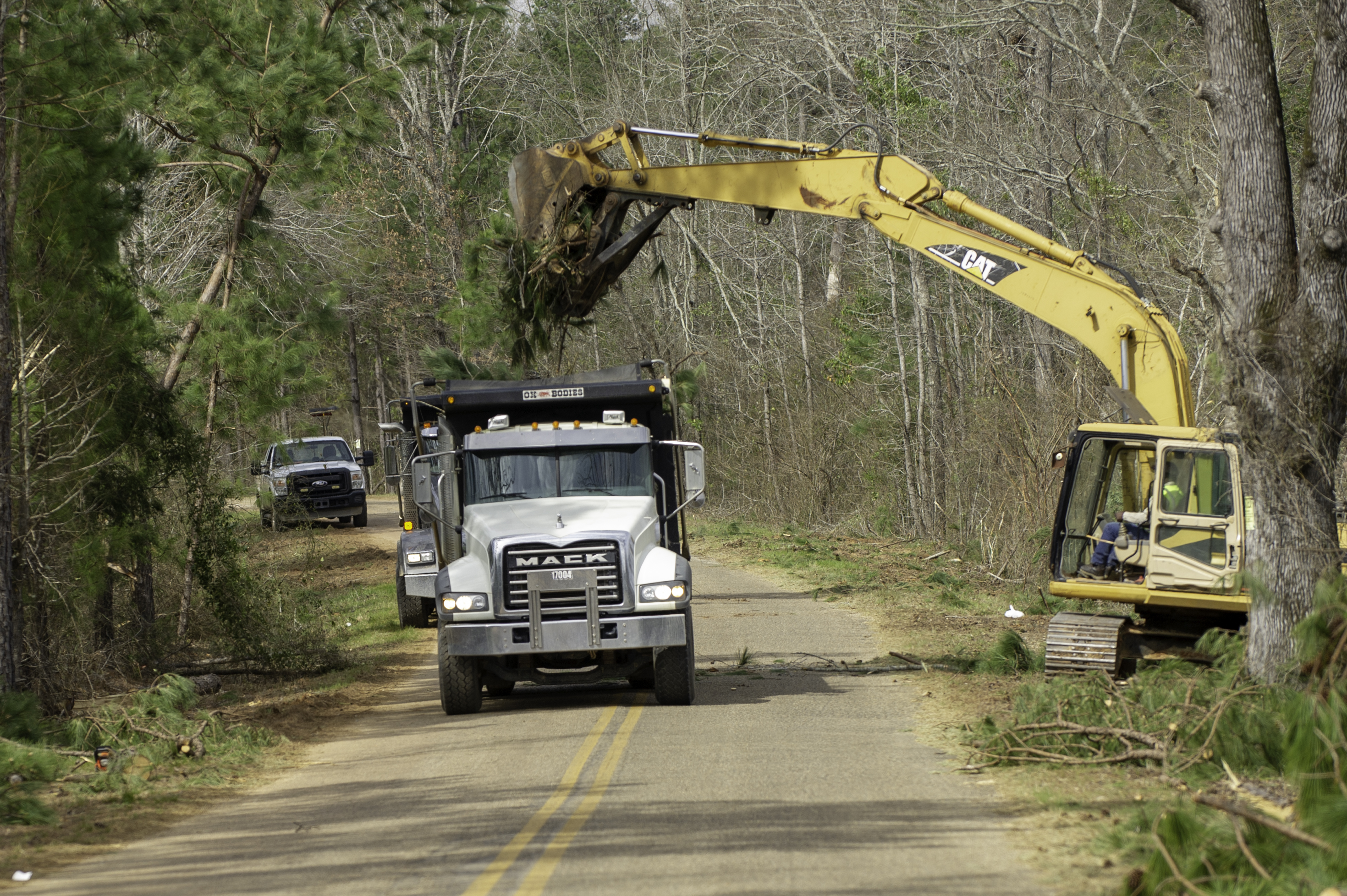By Kelly Daniel
For the Opelika
Observer
The Lee County Emergency Management Agency played a major role in preparing for the severe weather on March 3 and ensuring that the disaster response was rapid and coordinated.
Rita Smith, who serves the Lee County EMA as public information officer, described local first responders as responding to the tragic events with a combination of professionalism, compassion, and teamwork.
A heartbreaking truth of working in emergency management is that even if governments, civic organizations, and citizens do everything right, as Lee County communities did leading up to and following the March 3 disaster, fatalities can still happen in a powerful tornado, as Smith explained.
“We don’t mind cleaning up debris and property damage, but it’s the loss of life that is heartbreaking for everyone working as first responders and emergency management professionals,” Smith said.
While everyone hopes that conditions won’t come together to produce a deadly storm, the EMA staff and first responders weren’t shocked by the impact of the March 3 storm.
As the EMA posted on Facebook on March 8, “In our area, tornadoes have been and will remain the number one threat to life and property as it pertains to natural hazards.”
Rather than surprise, the main reaction was that of deep sadness for the loss of life and injuries that occurred.
The LCEMA’s public information campaign in the days leading up to the storm demonstrated the EMA’s commitment to their mission of partnering with Lee County citizens to prepare for and respond to emergency situations.
As early as the Wednesday before March 3, the LCEMA began to issue notifications of potential severe weather.
A heavier public information campaign began Friday and Saturday, after the NWS updated their projections to include the phrase, “strong tornadoes possible,” which was a significant development for everyone working in emergency management.
When a tornado watch was issued by the National Weather Service Sunday, EMA director Kathy Carson said, “(The EMA) urged everyone go to their designated safe area or storm shelter during the watch period and not to wait for a warning to be issued.”
As announced in a Facebook post and tweet at 10:30 a.m. on March 3, Providence Baptist Church in Beauregard was opened to the public as a safe place with a basement storm shelter.
“At the time the tornado watch was issued, there were 88 people sheltered at Providence, which is approximately 3 miles from the area the tornado ultimately impacted,” Carson said.
After the tornado hit, firefighters with Beauregard Fire Department were among the first to see fatalities and injuries.They, along with other firefighters, law enforcement officers and paramedics from departments throughout the area, worked tirelessly to save lives in the first hours and days after the storm.
A week after the storm devastated the area, the visit of President Donald J. Trump and First Lady Melania raised awareness of the storm’s impact beyond Alabama and placed Lee County in the national spotlight, generating even more aid and support.
The visit also required extensive preparation on behalf of local and state law enforcement.
The Beauregard High School Library was used as a temporary Joint Information Center, in which more than 300 media outlets were represented.
The president’s visit was made a success through the collaboration of the EMA, Lee County Sheriff’s Office, and both state and local governments.
From the initial recovery efforts in the days following the storm to the long term recovery that is ongoing, volunteers have also played a major role in helping disaster victims and cleaning up storm damage.
The EMA has made use of the United Way’s 2-1-1 program, which matches those in need with others who have the resources to help.
As of March 18, more than 6,000 volunteers had assisted in recovery efforts so far, but there is still a great need for volunteers as the LCEMA transitions into working out of their main warehouse.
When asked to list some of the organizations that contributed to recovery efforts, Smith said that there are too many organizations offering generous support to possibly list.
Among them are the United Way of Lee County, the American Red Cross, Samaritan’s Purse, Salvation Army, Seventh Day Adventists Community Services, and the Southern Baptist Association.
In a March 9 Facebook post, the EMA said, “We are overwhelmed at the amount of help flooding in to the Volunteer Reception Centers. Thank you, Lee County for loving your community.”
As Beauregard, Smiths Station and other communities continue to recover, the focus has shifted to long term healing.
When asked where Lee County is now in the recovery process, Smith said that the current focus is on showing the people who were affected that they are loved and supported by their communities.
She explained that while those who lost family members may never go back to the state of normalcy before the tornado, the EMA, local governments and civic organizations are there to help them find their new normal and continue to move forward.
As described in detail on their website, the Lee County EMA offers training that empowers volunteers to save lives and help neighbors when disaster strikes, such as through their CERT program and Citizen Corps.
Trained volunteers learn how to proceed if disaster strikes in their immediate vicinity, and they may also be recruited by the EMA to provide assistance in the event that a disaster strikes elsewhere in Lee County.
For more information, call 334-749-8161 or visit www.leecoema.com.

